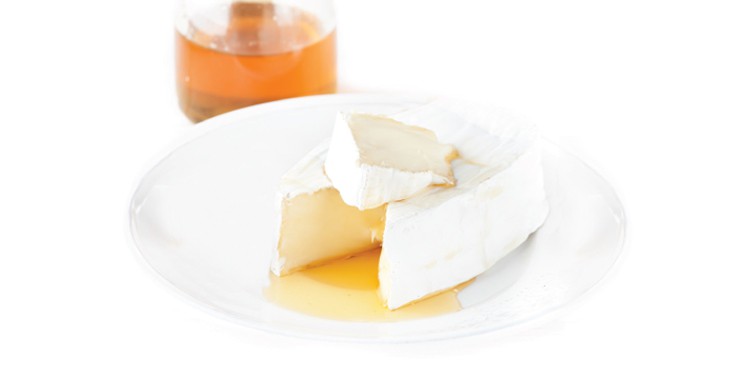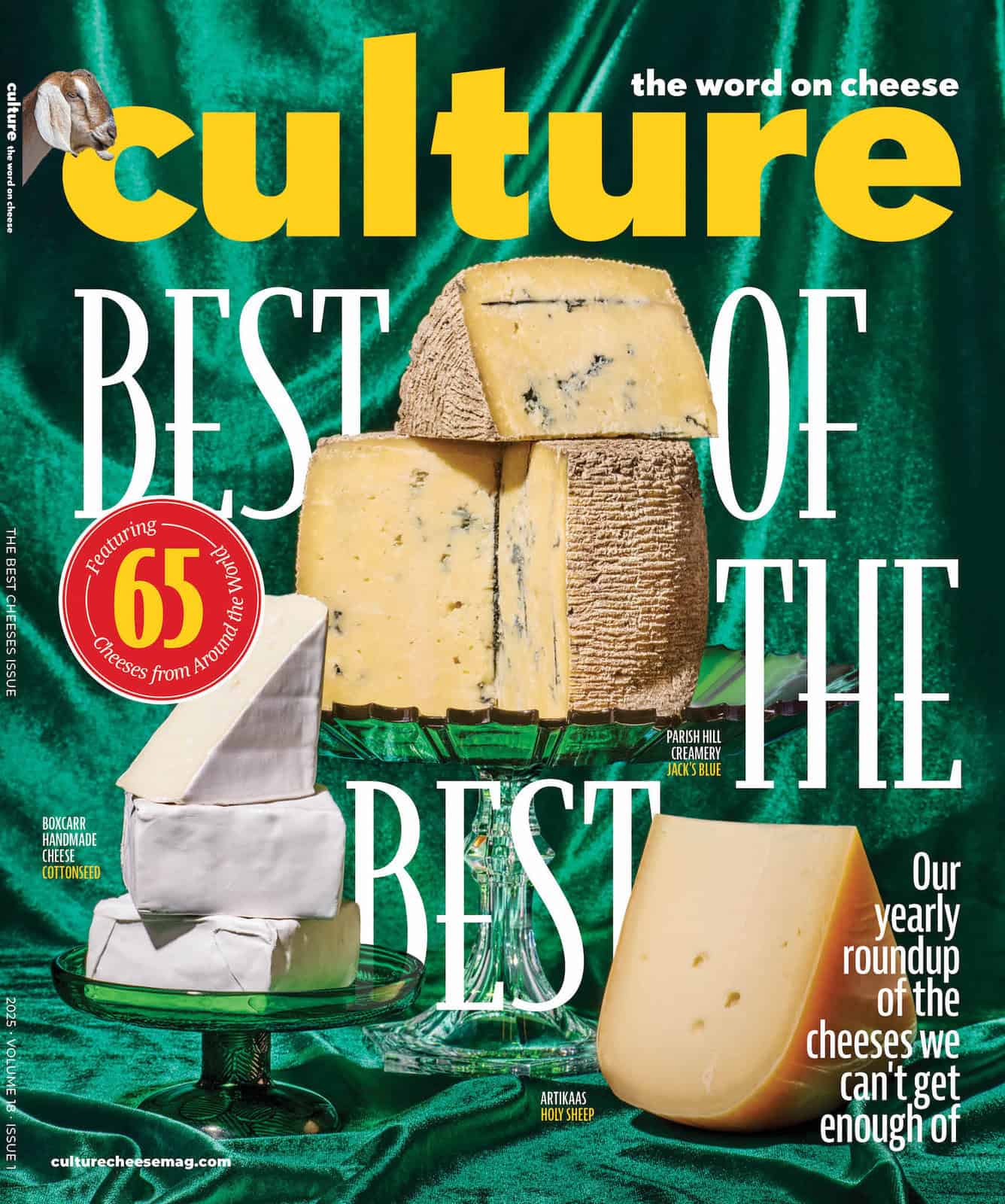
Sweet, viscous honey is a staple on cheese plates, but if you’re looking to mix it up a bit, you may want to entertain honey’s vegan cousin: maple syrup. Like honey, maple syrup is sourced from nature—in this case, trees instead of bees—but it offers a more complex depth of flavor for cheese pairings.
To make syrup, sugar maple trees are tapped by drilling holes into the trunks and fitting the holes with spouts and buckets to collect the sap that seeps out in the early spring months. Once the sap is collected, it’s boiled down to create the sweet liquid we all know and love. Forty gallons of sap are needed to create just one gallon of syrup, which—coupled with the constant supervision necessary during the boiling process— is one reason for pure maple syrup’s higher price when compared to “pancake syrup” (imitation maple syrup made from high fructose corn syrup and flavorings such as fenugreek).
To ensure the bottle you’re purchasing is the real deal, look for a letter grade (“A” or “B”) on the label. Depending on the syrup’s color and flavor (not quality, as is commonly believed), it will be placed in a specific grade or category—which also varies depending on where it was produced. In Canada, syrups are given one of three grades, each of which has several color classes. In the United States, syrups are assigned “Grade A” (which includes Light Amber, Medium Amber, and Dark Amber) or the darker “Grade B” (which has no subdivisions). A few states, such as Vermont, have their own grading standards that go further, but for cheese-pairing purposes, we’ll stick with easier-to-navigate US grades.

Grade A Light Amber—also called “Fancy” in Vermont—is the lightest in color and flavor of all maple syrups. Its delicate notes of vanillin and butter can be easily overwhelmed, so co-owner Emma Marvin of Butternut Mountain Farm in Morrisville, Vt., one of the largest maple processors and distributors in the United States, recommends pairing it with subtle, fresh cheeses such as mascarpone or ricotta. “Sometimes at our house,” she says, “we do crepes with crème fraîche and Fancy maple syrup. It’s a really beautiful, simple breakfast.” This grade of syrup also makes for a fabulous dessert topping: The producers at Tonewood Maple of Waitsfield, Vt., recommend drizzling it over ice cream or yogurt.
Grade A Medium Amber, with its deep golden color and pure maple flavor, is what’s most commonly poured over pancakes and waffles. Jacob Griffin, executive chef and “maple sommelier” at Crown Maple Syrup in New York’s Dutchess County, suggests pairing it with a salty cheese, such as Parmesan or pecorino, for “the perfect creamy, sweet and salty experience, allowing the toasted notes of the maple to shine through.” Other ideas: Drizzle it over creamy goat cheese or cheddar-topped apple pie.
Grade A Dark Amber is, as its name suggests, much darker than Light or Medium Amber. This chestnut-hued syrup contains notes of caramel, burnt sugar, and, naturally, maple. “Foods with a little bit of nuttiness go very well with Grade A Dark Amber,” explains Marvin, making it a perfect match for nutty cheddars such as Gold Creek Farms Aged White Cheddar.
Grade B maple syrup is typically only used in cooking because of its dominant maple flavor and pronounced notes of brown sugar. Luckily, cheese is also often used as an ingredient, so it’s not difficult to create a dish where the two can shine together. Marvin recommends combining olive oil and Grade B syrup to make a salad dressing, and enjoying it over a bed of greens speckled with shards of blue cheese. Feeling bolder? Griffin likes to drizzle the syrup over a slice of creamy, funky cheese such as Morbier or Taleggio: “The maple creates a smooth and less ‘stinky’ finish to the pairing,” Griffin says.
Finally, if you’re unfussy about syrup grades, or just want to use up the last of a bottle, bake some Brie and finish off the round with a drizzle of maple syrup. Slice and serve as you would traditional baked Brie—you won’t be disappointed, we promise.
A Change in Grades: You’ll be able to find both grades A and B maple syrup in your grocery store for now, but things are changing soon. Take a look at the new grading standards being enforced in Vermont in 2015.



